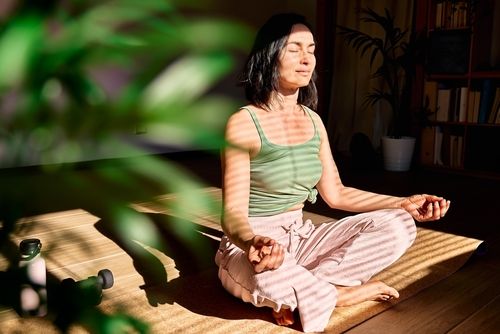 When many people think of Zen, the first thing that comes to mind is peace. While a calm demeanor is typical of people who embrace a Zen lifestyle, it is more likely the outcome of their practice rather than the path they use to get there. Zen combines a deep understanding of humanity with a connection to nature, and this is where peace comes from.
When many people think of Zen, the first thing that comes to mind is peace. While a calm demeanor is typical of people who embrace a Zen lifestyle, it is more likely the outcome of their practice rather than the path they use to get there. Zen combines a deep understanding of humanity with a connection to nature, and this is where peace comes from.
Rooted in the Buddhist tradition, the practice of Zen mindfulness is open to people of all religions. You can incorporate it into your own spiritual disciplines to deepen your walk with God, the universe, or the community around you.
Meditation
When you think of meditation, you may picture yourself sitting on the floor or on a bench in silent contemplation. This is a good daily practice, but it's not the only type of Zen meditation. You not only need to pay close attention to your breath but also must learn how to take this focus into your everyday life.
Zazen
The main goal of zazen meditation is to center your attention on your breathing in the present moment. First, find a quiet location where you are unlikely to be interrupted. It may be easier to commit to daily practice if you are able to designate a meditation space in your home.
It may take a while to get into a focused state, so the next thing you need to do is find a comfortable sitting pose:
- Full lotus
- Half lotus
- Burmese
- Kneeling
If you have mobility issues, you can also sit on a chair or bench. Place your hands in the meditation mudra you prefer, and you are ready to begin.
Concentrate on your breath as you inhale through the nose for a count of ten. Then exhale slowly, extending the count if possible. As your practice gets stronger, you may try other breathing techniques, but starting with a simple count is the best way to ensure your focus remains on your breath and how it affects your body instead of the pattern itself.
Kinhin
Another type of Zen meditation is kinhin or walking meditation. This gives you a chance to practice the serenity you find in seated meditation as you move through the world. It teaches you to maintain your sense of peace regardless of your circumstances.
Kinhin is often practiced in a group. At the end of a zazen session, there will be a signal that it's time to begin walking. Participants form a single line and move around the designated space, holding their hands at waist level in shashu with forearms parallel to the floor. Chants are often part of the meditation practice to help maintain focus.
Application
One of the perks of walking meditation is that it can be practiced anywhere. Even as you move throughout your day at work, you can still stay grounded and focused. Make sure you are taking multiple breaks throughout the day for kinhin meditation.
Everything you do can be connected to humanity and nature through mindfulness. At work, create an atmosphere with soothing sounds and lighting, and focus on one task at a time to minimize distractions. At home, build habits that keep your environment serene, such as mindful eating and daily tidying practices. Start and end your day with meditation and reflection, expressing gratitude and reviewing what you have learned throughout the day.
Maintaining a Zen lifestyle is not something you are likely to be good at right away. However, you may experience a noticeable difference in your mood or outlook even with the first meditation session. With patience and practice, you can release attachments and enjoy sustained peace through consistent mindfulness.



